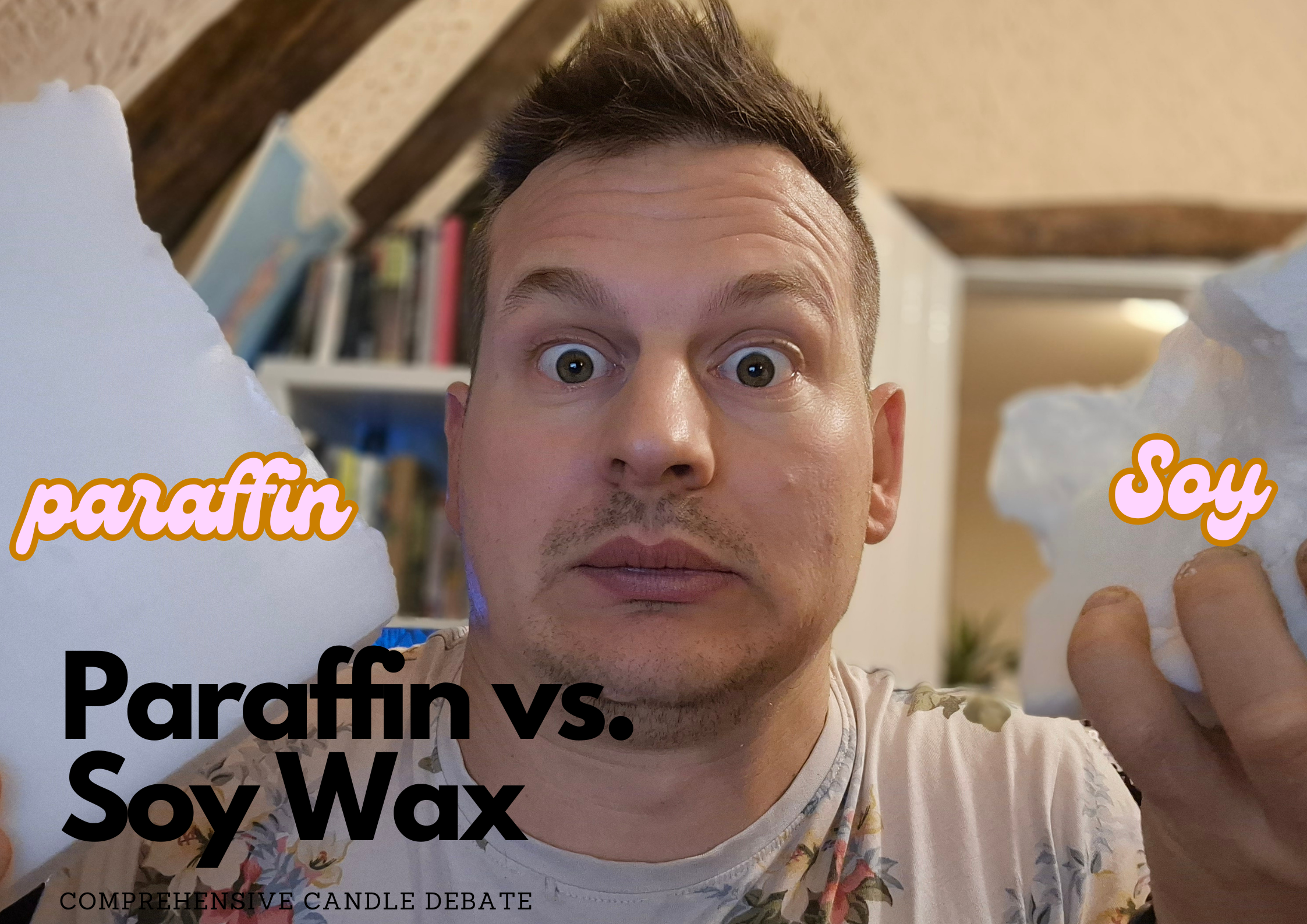Paraffin vs. Soy Wax: A Comprehensive Candle Debate
Nov 26 , 2024
When it comes to candle-making, few topics spark as much debate as the choice between paraffin wax and soy wax. I recently made the leap to using a refined mineral wax—commonly known as paraffin—blended with vegetable triglycerides and soy wax. This switch has been transformative for my candles, but it also plunged me into the ongoing discussion about the benefits and drawbacks of these waxes.
Let’s dive into this debate, examine the facts, and explore why I made this significant change.
Why I Switched from Soy Wax to Paraffin Wax
For years, I exclusively used soy wax for my candles. Marketed as eco-friendly and non-toxic, soy wax seemed like the obvious choice. However, my soy candles were not performing as well as I wanted, particularly with certain fragrances. I spent countless hours experimenting with processes, tweaking formulas, and scouring forums, convinced I was the problem. Eventually, I realized that some fragrance oils simply don’t work well with soy wax.
This realization prompted me to explore other options. A chance encounter with a candle boasting an incredible scent throw led me to investigate its wax composition. After some reverse engineering, I discovered it was a refined mineral wax. Testing confirmed that this wax, mixed with soy, provided the fragrance performance I’d been searching for. My current blend—approximately 60% paraffin wax and 40% soy wax—delivers exceptional scent throw, supports higher fragrance loads, and burns cleanly.

Soy Wax: The Myths and Realities
Soy wax is often celebrated for its eco-friendly image, but the reality is more complex. Derived from soybean oil, soy wax undergoes a process called hydrogenation, which solidifies the oil into wax. While soy wax is natural, the solvents used to extract the oil from soybeans are less environmentally friendly than people might think.
Key properties of soy wax include:
- Non-toxic: It’s safe for use in candles.
- Clean-burning: It produces minimal soot when burned correctly.
- Colorless and opaque: Its natural appearance appeals to many consumers.
Despite these benefits, soy wax has limitations. It’s softer than paraffin wax, struggles with certain fragrance oils, and is not as durable in high-fragrance or complex blends.
Paraffin Wax: Debunking the Stigma
Paraffin wax, derived from crude oil, has long been stigmatized as "unnatural" and "toxic." However, scientific evidence paints a different picture. Paraffin wax is a natural byproduct of crude oil refinement and is non-toxic and clean-burning when used in candles.
Key properties of paraffin wax include:
- Non-toxic: Safe for use in candles, as confirmed by studies.
- Water-repellent: Excellent for protecting surfaces.
- Clean-burning: Meets federal regulations for indoor air safety.
- Colorless and translucent: Works well in many candle styles.
Critics often claim that paraffin wax emits harmful toxins, but research shows that all waxes—whether soy, paraffin, or beeswax—produce similar emissions during combustion. A detailed study comparing various waxes found no significant differences in toxicity or safety between them. In other words, paraffin wax is no more harmful than soy wax.
The Bigger Picture: Scented Candles and Emissions
Fragrance oils, rather than waxes, are often the culprits behind allergic reactions or headaches. Scented candles, regardless of wax type, produce more volatile organic compounds (VOCs) than unscented candles due to the combustion of fragrance molecules. However, these emissions are still well below safety thresholds for indoor air quality.
Unfounded claims about paraffin wax’s toxicity persist online, often driven by marketing from soy wax manufacturers. The reality is that both soy and paraffin waxes are safe and effective for candle-making. Choosing one over the other boils down to personal preference and performance needs.
Why I Choose a Paraffin-Soy Blend

For my business, a paraffin-soy blend strikes the perfect balance. It delivers:
- Superior scent throw: Perfect for showcasing complex fragrances.
- Durability: Handles higher fragrance loads without seeping.
- Consistency: Produces clean, reliable burns.
Additionally, switching to tins instead of jars simplified production. I no longer obsess over perfect glass adhesion, allowing me to focus on creating high-quality candles that perform beautifully. This shift also enabled me to scale my business by letting go of the pursuit of perfection.
The Bottom Line: Choose What Works for You
Ultimately, the debate between soy and paraffin wax is more about marketing than science. Both waxes are safe, effective, and have their own strengths and weaknesses. The best choice depends on your needs as a candle maker and the preferences of your customers.
If you’re new to candle-making, experiment with different waxes to find what works best for you. Test scent throw, burn performance, and overall quality. Remember that buzzwords like "eco-friendly" and "natural" can be misleading. Candle-making is an art, and every wax has its place.
Final Thoughts
The world of candle-making is full of variables, from wax types to fragrance oils. While it’s easy to get caught up in the debate, the most important thing is to create products you’re proud of and that your customers love. Whether you choose soy, paraffin, or a blend, let performance guide your decision—not marketing hype.
Have thoughts on the paraffin vs. soy debate? Share them in the comments below! And if you enjoyed this article, don’t forget to like, subscribe, and stay tuned for more candle-making insights.




